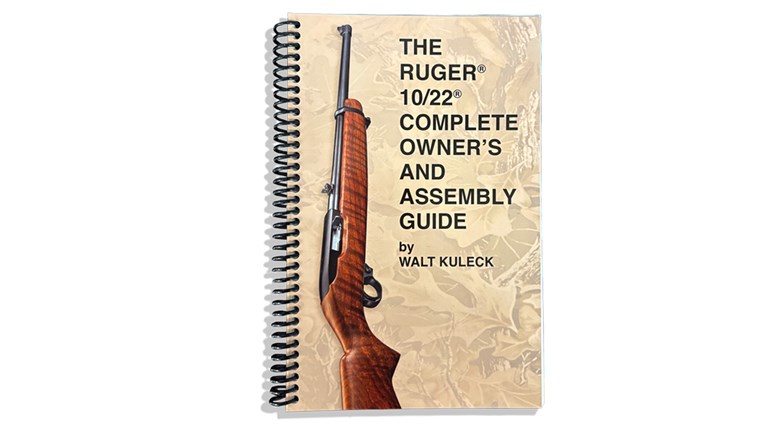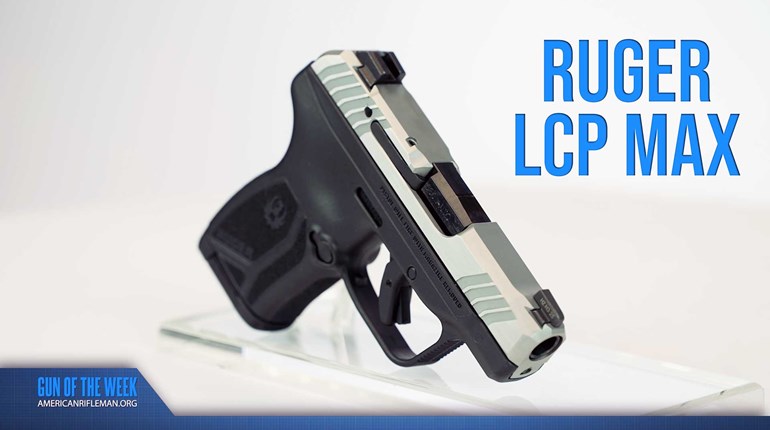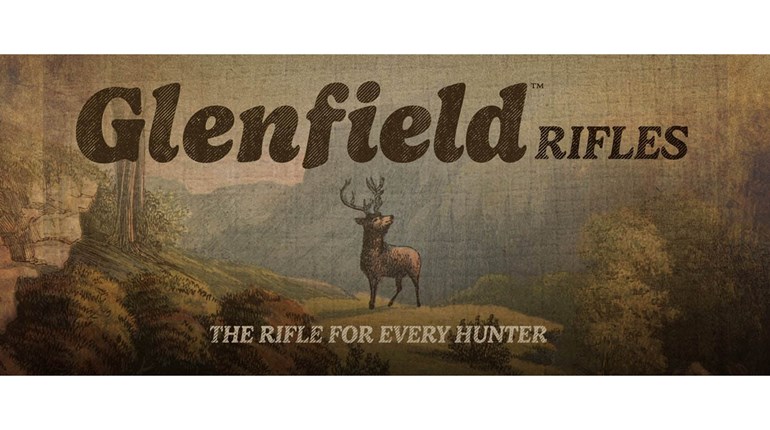My taste in rifles resembles the music collection of a severe schizophrenic. Among the black guns, the obscenely accurate synthetics, the express-style sporters and classics like a Mannlicher-Schoenauer carbine, exists a special place in my heart. That soft spot is for the simplest of tools: the single-shot falling-block rifle. Logic would tell you that the simple and serviceable single-shot would be a tool for the masses, leaning in the doorways of farmhouses and riding in the gun racks of pickup trucks—but that’s not the case.
Nowadays only the true rifle aficionado, the kind of hunter who owns a brace of rifles and chooses the perfect fit for each and every hunt, favors the single-shot rifle. I’m a victim of that very sickness.
Of the falling-block rifles, only the Ruger No. 1 hovers in the affordable range for most hunters and is, therefore, the most common of the breed. Like other single-shots, the Ruger shares a virtue of psychological advantage: when you know that you only have one shot, you’re likely to make that shot count. It is a rare case when I fire more than a single round at a big game animal, and when it does happen it’s because I wasn’t careful enough with the first round. With a single shot, you’re forced to always be careful with the first round. In years past, Ruger’s lineup of No. 1s would fill the page of a catalog, with each variant available in multiple chamberings. Lately, Ruger has simplified their lineup by limiting each model to one or two cartridges and rotating those selections annually. This year, Ruger paired their classically styled No. 1-S Medium Sporter with a truly classic cartridge: the 9.3x62mm.
It goes without saying that the 9.3x62mm is not exactly the most popular cartridge in the country. Hunters who use it, however, are likely to discover the virtues of the cartridge that make it a standby in Europe and Africa. If the .35 Whelen mated with the .375 H&H, its offspring would look a lot like the 9.3x62. This classic medium bore is effective on moose, elk, bears and big deer—without generating obscene recoil. Don’t get me wrong, the metric system doesn’t eliminate the laws of physics: a 286gr. bullet at 2,350 fps will let you know that it’s there, especially out of a 7¼ pound No.1. The recoil isn’t obnoxious, though, and it isn’t enough to get into your head when you’re trying to make the shot count. This .366 gives you more penetration than the .338s or .358s with less recoil than the .375—that’s a pretty useful cartridge. In some African countries, the 9.3 is the legal minimum for dangerous game such as Cape Buffalo and has done the job on scores of them. You won’t find 9.3x62mm cartridges at the gas station, but 19 different loads are currently available in the U.S.
Psychology aside, single-shots such as the No. 1 have other virtues that give them an advantage afield. Because they don’t have a magazine, they can be made 3 or more inches shorter while maintaining the same barrel length as a repeater. This makes for a compact overall package that is easy to maneuver in thick cover—a perfect pairing for a medium bore such as the 9.3. At 38½” overall, this No.1 is a handy rifle—made even handier by a barrel band sling swivel that allows the rifle to be slung low on the shoulder. When it’s not slung on the shoulder, the flat and narrow receiver makes the rifle carry naturally at the hunter’s side—the short length ensures that the barrel clears obstacles on the ground.
The compact dimensions of the rifle make a perfect fit for the timber, swamp or African jess. Stalking elk in blow-down, moose in thickets or Eland in the thorn would maximize the features of No. 1—and the 9.3x62 would be a fine match for any of the aforementioned game. Because I envision the rifle as a solution to a short range problem, I decided against mounting a scope. Many shooters my age are not well acquainted with iron sights on a rifle, which is a shame. Scopes, like GPSs, are great tools but sometimes a map and compass or a good set of sights are the best option. The open factory sights on the Ruger are fine—better than most, actually—but an aperture is faster, easier to master and more precise. With an aperture sight, the shooter looks through the rear sight and uses the front post or bead as the sole aiming point—it’s simple, it’s fast and it never fogs up. New England Custom Gun, Ltd. In New Hampshire markets a ghost ring aperture compatible with the integral scope mounts on both Ruger and CZ rifles. The all-steel rear sight simply screws onto the scope base and can be adjusted for both windage and elevation—it works in conjunction with the factory gold bead on the Ruger No.1.
The rifle itself has all of the common features of the No.1: tang safety, Alexander Henry forend, banded front sight, integral scope mounting slots (rings included) and a straight-grained walnut buttstock. The trigger was surprisingly good for a factory rifle. My only real complaint is the thin rubber butt pad, which did little to dampen the rifle’s recoil. I have a hard time leaving guns alone, but my only modification to this rifle would have been to replace the factory pad with one of Pachmayr or NECG’s red 1” pads.
 Because scopes are so common these days, nearly all rifle targets are designed with scopes in-mind. It is nearly impossible to see the small aiming points on a paper target at anything further than spitting distance with the naked eye, making these targets poorly-suited for use with irons. Some years ago, D’Arcy Echols began producing a target specifically designed for the aperture-sighted big bores he produces for his clients. The target is a simple inverted black “T” on a white background- the shooter places the bead in the center of the junction of the vertical and horizontal lines. I wasn’t sure how well this would work until I actually tried it- it’s simpler to do than it is to explain, Apple would call it “intuitive.” Once I adjusted the sights to a 50-yard zero, I held the gold bead in the black void and squeezed the 3 pound trigger. A walk to the target revealed two shots in a hole so small only a dial caliper proved it was more than a single round, flanked by a third shot that landed an 1 1/2” or so away. The Nosler load, the rifle, the NECG sight, and the target all did their jobs better than I did. I ended up using both Nosler’s 250gr. Accubond load as well as the Barnes Vor-Tx ammo which uses a TSX in the 9.3’s traditional 286gr. bullet weight. The Nosler load would be my choice for deer and elk and I’d point the TSX at anything but an elephant and expect it to come out the other side.
Because scopes are so common these days, nearly all rifle targets are designed with scopes in-mind. It is nearly impossible to see the small aiming points on a paper target at anything further than spitting distance with the naked eye, making these targets poorly-suited for use with irons. Some years ago, D’Arcy Echols began producing a target specifically designed for the aperture-sighted big bores he produces for his clients. The target is a simple inverted black “T” on a white background- the shooter places the bead in the center of the junction of the vertical and horizontal lines. I wasn’t sure how well this would work until I actually tried it- it’s simpler to do than it is to explain, Apple would call it “intuitive.” Once I adjusted the sights to a 50-yard zero, I held the gold bead in the black void and squeezed the 3 pound trigger. A walk to the target revealed two shots in a hole so small only a dial caliper proved it was more than a single round, flanked by a third shot that landed an 1 1/2” or so away. The Nosler load, the rifle, the NECG sight, and the target all did their jobs better than I did. I ended up using both Nosler’s 250gr. Accubond load as well as the Barnes Vor-Tx ammo which uses a TSX in the 9.3’s traditional 286gr. bullet weight. The Nosler load would be my choice for deer and elk and I’d point the TSX at anything but an elephant and expect it to come out the other side.
I doubt that we’ll see a resurgence in the popularity of the single-shot hunting rifle, nor is the 9.3 the next Great American Deer Cartridge, but both deserve a place in a serious hunter’s gun safe. For big animals in thick cover though, this rifle and cartridge combination would do great work. I’m not proposing that we Americans adopt the metric system, but it wouldn’t kill us to try out some metric calibers.
Technical Specifications:
Stock: American Walnut
Material: Alloy Steel
Finish: Blued
Front Sight: Bead
Rear Sight: Adjustable
LOP: 13.50"
Barrel Length: 22"
Overall Length: 38.50"
Twist: 1:10" RH
Weight: 7.25 lbs.
MSRP: $1399





































